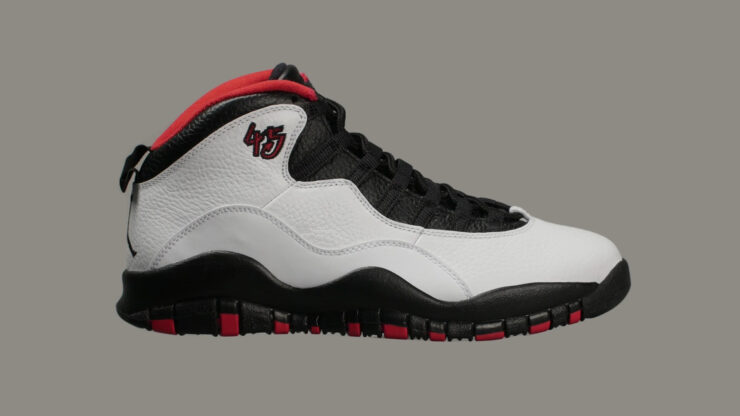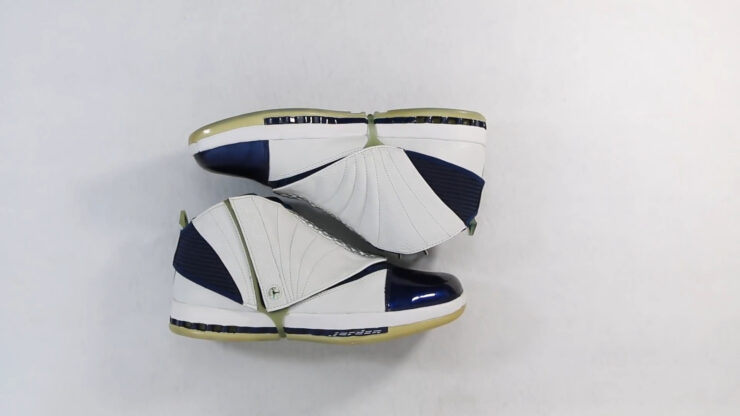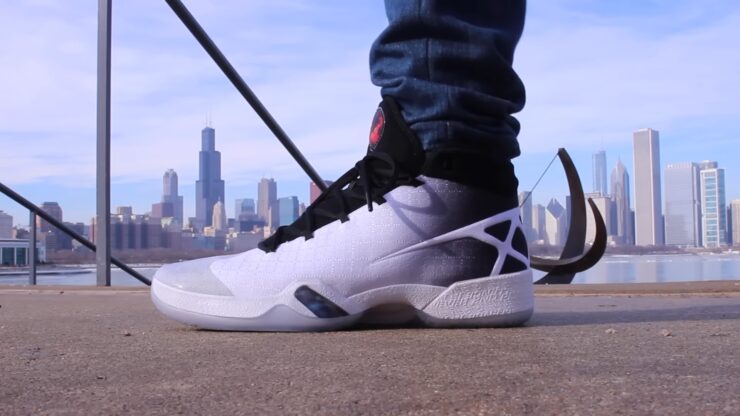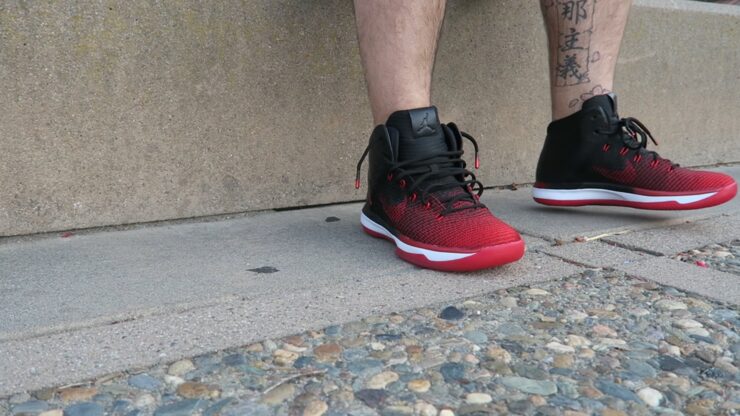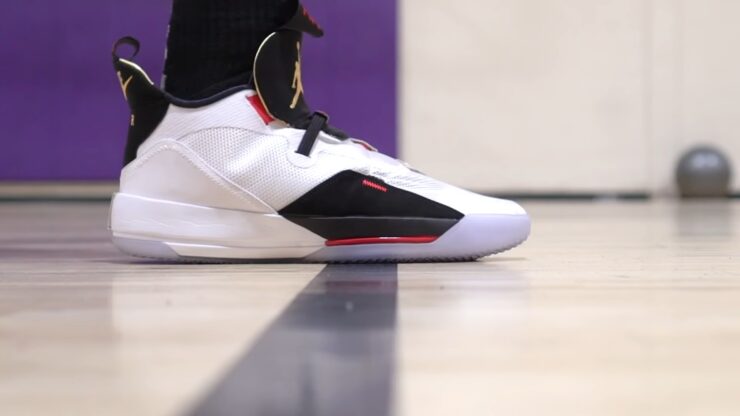Welcome to the world of Air Jordans, where the line between sports and fashion blurs and where a pair of shoes is more than just footwear—it’s a symbol of history, culture, and style. This article will take you on a journey through the iconic Air Jordan series from its inception to the present day. We’ll delve into the rich history of each model, the cultural impact they’ve had, and the fandom that surrounds them.
Air Jordans, named after the legendary basketball player Michael Jordan, have become a cultural phenomenon since their debut in 1985. They’ve transcended their roots as basketball shoes to become a staple of streetwear and pop culture. But how many Jordan shoes are there? Let’s dive into the fascinating world of Air Jordans and explore the story behind each model.
While each model of Air Jordans tells a story about the evolution of basketball and fashion trends, they also reflect the remarkable career of Michael Jordan, whose impact on the sport can be seen in comparisons with other greats like LeBron James.
A Brief History
The Air Jordan saga began in 1984 when Nike signed a then-rookie guard from the Chicago Bulls, Michael Jordan. At the time, Nike was a struggling brand, and signing Jordan was a bold move that would eventually pay off in spades. The first Air Jordan shoes were released in 1985, and they were an instant success, setting the stage for a series of shoes that would become iconic in the world of sports and fashion.
The Air Jordan brand has since grown into a billion-dollar business, with new models released every year. Each model tells a story, reflecting the evolution of basketball, fashion trends, and Michael Jordan’s career. From the groundbreaking Air Jordan 1 to the futuristic Air Jordan 37, each shoe has left an indelible mark on the sneaker world.
Sneakerhead Culture: The Phenomenon of Jordan Shoe Fandom
The rise of Air Jordans also gave birth to a new breed of enthusiasts known as ‘sneakerheads.’ These are individuals who collect, trade or admire sneakers as a hobby. For sneakerheads, Air Jordans are more than just shoes—they’re pieces of art, historical artifacts, and investments. The fandom around Jordan shoes is so intense that new releases often lead to long lines at stores and record-breaking sales online.
The phenomenon of Jordan shoe fandom is not just about the shoes themselves but also about the culture that surrounds them. It’s about the thrill of the hunt for a rare pair, the camaraderie among collectors, and the shared appreciation for the craftsmanship and design of each model. It’s a culture that transcends age, race, and geography, uniting people around a shared passion.
All Shoes in Chronological Order
1. Air Jordan 1 (1985)
The Air Jordan 1, the shoe that started it all, was first released in 1985. It was unlike any other basketball shoe at the time, with its bold black and red colorway that defied the NBA’s uniform policy. Despite being banned by the NBA, the controversy only added to its appeal, and the Air Jordan 1 became a symbol of rebellion and individuality.
The design of this shoe was inspired by Michael Jordan’s dynamic style of play. It featured a high-top design for ankle support, a Nike Air unit for cushioning, and a rubber outsole for traction. It set the standard for performance and style, and it remains one of the most iconic and beloved models in the series.
2. Air Jordan 2 (1986)
The Air Jordan 2, released in 1986, was a departure from the first model. It was the first Nike shoe not to feature the iconic Swoosh logo, signaling that the Air Jordan brand could stand on its own. The shoe also introduced luxury to the basketball court, with its Italian-made design and faux lizard skin on the upper.
This model continued the tradition of breaking boundaries. It was the first basketball shoe to be made in Italy, bringing a sense of luxury and craftsmanship to the court. Despite its initial mixed reception, the Air Jordan 2 has since become a beloved classic, appreciated for its unique design and premium materials.
3. Air Jordan 3 (1988)
The Air Jordan 3, released in 1988, marked a pivotal moment in the series. It was the first model to feature the now-iconic Jumpman logo, a silhouette of Michael Jordan mid-dunk. The shoe also introduced a visible Air unit in the heel, a first for the basketball shoe industry.
Designed by Tinker Hatfield, this model was lauded for its comfort, style, and innovative design. It was also the shoe that Michael Jordan wore during his 1988 dunk contest win, adding to its legendary status. The Air Jordan 3 remains a fan favorite, known for its iconic elephant print and role in sneaker history.
4. Air Jordan 4 (1989)
In 1989, the Air Jordan 4 hit the market. This model was the first to feature mesh on the upper, improving breathability and reducing weight. It also introduced a unique lacing system, allowing for 18 different lacing options for personalized fit and style.
The shoe was also notable for its appearance in pop culture. It was featured in Spike Lee’s film “Do the Right Thing,” cementing its place in both sneaker and cinema history. It remains a staple in the Jordan line, loved for its classic design and cultural significance.
5. Air Jordan 5 (1990)
The Air Jordan 5, released in 1990, was inspired by World War II fighter planes. This inspiration was reflected in the shark teeth design on the midsole. The shoe also introduced a reflective tongue and clear soles, adding unique design elements that set it apart from previous models.
The Air Jordan 5 was a testament to the creativity and innovation that this series is known for. It pushed the boundaries of what a basketball shoe could be, combining performance features with bold, eye-catching design. The shoe remains a beloved model among sneakerheads and basketball fans alike.
6. Air Jordan 6 (1991)
The Air Jordan 6, released in 1991, holds a special place in the series’ legacy. It was the shoe that Michael Jordan wore when he won his first NBA championship, marking the start of the Chicago Bulls dynasty in the 90s. It introduced a rubber tongue with two holes for easier pull-on and a clear outsole, which was a big hit among fans.
The design of the shoe was sleek and modern, reflecting Jordan’s maturing style of play. It was also the last model to feature the Nike Air logo, as future models would only feature the Jumpman logo. This model remains a symbol of victory and a favorite among Jordan enthusiasts.
7. Air Jordan 7 (1992)
The Air Jordan 7, released in 1992, was a departure from the previous models. It was lighter and more colorful, reflecting the vibrant culture of the 90s. It also removed the visible Air unit in the heel, opting for a more streamlined design.
This model holds a special place in pop culture history. It was the shoe that Michael Jordan wore in the 1992 Olympics when the USA basketball team, also known as the “Dream Team,” took home the gold. Sevens remains a classic, known for its unique design and cultural significance.
8. Air Jordan 8 (1993)
The Air Jordan 8, released in 1993, was a bold and unique design that reflected the spirit of the 90s. It featured a unique strap system for added lockdown, a fuzzy tongue logo, and a vibrant colorway. This was the shoe that Michael Jordan wore during his third championship win, adding to its legendary status.
The design of this model was a departure from previous models, featuring more color and unique design elements. Despite its initial mixed reception, it has since become a beloved classic, appreciated for its unique design and cultural significance.
9. Air Jordan 9 (1993)
The Air Jordan 9 was released in 1993, the same year Michael Jordan announced his first retirement from basketball. The shoe was designed to encapsulate Jordan’s global influence, with different languages and symbols on the sole representing Jordan’s impact on various countries and cultures.
Despite Jordan not wearing these on the court during its initial release, the shoe holds a special place in the lineage. It symbolizes the global impact of Michael Jordan and his brand, and its unique design continues to captivate fans around the world.
10. Air Jordan 10 (1995)
Released in 1995, this shoe was a tribute to Michael Jordan’s illustrious career. The sole of the shoe featured a list of Jordan’s achievements for each of his first ten years in the NBA. The Air Jordan 10 was released during Jordan’s first retirement, making it a poignant tribute to his impact on the game.
It holds a special place in the series, as it was the shoe that Jordan wore during his return to the NBA, marking a new chapter in his career. This model remains a symbol of Jordan’s legacy and a favorite among fans.
11. Air Jordan 11 (1995)
The Air Jordan 11, released in 1995, is often considered one of the most iconic sneakers of all time. It was the first basketball shoe to feature patent leather, a design choice that made the shoe look as good with a suit as it did on the court. It was also the shoe that Jordan wore during his fourth championship win.
The model was a game-changer, both in terms of design and performance. Its sleek, shiny design and superior performance features made it a favorite among players and fans alike. The eleventh model in the series continues to be a highly sought-after model, symbolizing the perfect blend of performance and style.
12. Air Jordan 12 (1996)
The Air Jordan 12, released in 1996, was inspired by the Japanese flag and a 19th-century women’s dress boot. It was the first shoe to feature Zoom Air, and it was built for performance with superior ankle support and a full-length carbon fiber shank.
Twelves were the shoe that Michael Jordan wore during his legendary “Flu Game,” where he played while being severely ill and still managed to score 38 points. This moment in history adds to the allure of this model, making it a beloved model in the series.
13. Air Jordan 13 (1997)
This shoe was released in 1997 and was inspired by a panther, reflecting Jordan’s predatory nature on the court. The outsole resembles a panther’s paw, and the hologram on the ankle represents the animal’s eyes. The Air Jordan 13 was the shoe that Jordan wore during his fifth championship win.
It is known for its unique design and superior comfort, and it’s a testament to the creativity and innovation that the series is known for.
14. Air Jordan 14 (1998)
The Air Jordan 14, released in 1998, was inspired by Michael Jordan’s love for Italian sports cars. The sleek design, aerodynamic lines, and high-performance materials mirrored the design of a Ferrari. It was the shoe that Jordan wore during his last game as a Chicago Bull, where he hit the game-winning shot for his sixth championship.
This model symbolizes the end of an era, marking the last shoe that Jordan wore as a Chicago Bull. Its unique design and historical significance make it a beloved model among fans.
15. Air Jordan 15 (1999)
Released in 1999, this model was inspired by the X-15 fighter jet. It was the first shoe released after Michael Jordan’s second retirement. The design was futuristic and unconventional, featuring a woven upper and a protruding tongue meant to symbolize Jordan’s habit of sticking out his tongue during intense moments in games.
The Air Jordan 15 is often considered one of the most polarizing models in the series. Its unique design was a departure from previous models, but it’s this uniqueness that has earned it a dedicated following among fans.
16. Air Jordan 16 (2001)
The Air Jordan 16, released in 2001, marked a new era for the series. It was the first model released after Michael Jordan’s second retirement and his subsequent return to the NBA with the Washington Wizards. The shoe 16 featured a removable shroud that could transform the shoe from a performance model to a fashion statement.
17. Air Jordan 17 (2002)
The Air Jordan 17, released in 2002, was inspired by Michael Jordan’s love for jazz music. The shoe featured a removable lace cover and came in a metal briefcase, adding a touch of luxury and sophistication. It was the shoe that Jordan wore during his final All-Star game.
The model is known for its premium materials and attention to detail. The 17s remain a beloved model among fans, known for its unique design and cultural significance.
18. Air Jordan 18 (2003)
The Air Jordan 18, released in 2003, was inspired by Italian design and sports cars. It featured a one-piece upper and a hidden lacing system, creating a sleek and streamlined look. This was the shoe that Jordan wore during his final game in the NBA.
The model symbolizes the end of an era, marking the last shoe that Jordan wore in the NBA. Its unique design and historical significance make it a beloved model among fans.
19. Air Jordan 19 (2004)
The Air Jordan 19, released in 2004, was inspired by the Black Mamba, one of the world’s deadliest snakes. The shoe featured a Tech-Flex upper with a Velcro heel strap and plastic lace locks, providing a secure and flexible fit. It was the first model released after Michael Jordan’s final retirement.
20. Air Jordan 20 (2005)
The Air Jordan 20, released in 2005, marked the 20th anniversary of the Air Jordan series. The shoe featured a laser-etched design on the strap, telling the story of Michael Jordan’s life and career. The 20s also introduced the I.P.S. (Independent Podular Suspension) technology, offering customizable cushioning for the wearer.
21. Air Jordan 21 (2006)
The Air Jordan 21, released in 2006, was inspired by high-performance sports cars. The shoe featured a sleek design with a hidden lacing system and a breathable mesh upper. The model also introduced a customizable cushioning system, allowing wearers to choose between Zoom Air and encapsulated air.
22. Air Jordan 22 (2007)
The Air Jordan 22, released in 2007, was inspired by the F-22 Raptor fighter jet. The shoe featured a titanium shank plate and a variable-speed lacing system, providing a secure and customizable fit. It also introduced a new airbag for improved cushioning.
23. Air Jordan 23 (2008)
The Air Jordan 23, released in 2008, marked a milestone in the Air Jordan series. It was the first basketball shoe to embrace the Nike Considered design ethos, which seeks to reduce waste and use environmentally friendly materials without compromising performance. The 23s featured a hand-stitched exterior, full-length bootie, carbon-fiber shank plate, and articulated chassis.
24. Air Jordan 2009 (2009)
The Air Jordan 2009, released in 2009, was a tribute to Michael Jordan’s induction into the Basketball Hall of Fame. The shoe featured a unique design with a translucent outsole and a new cushioning technology called Articulated Propulsion Technology (APT).
25. Air Jordan 2010 (2010)
The Air Jordan 2010, released in 2010, marked the 25th anniversary of the Air Jordan series. The shoe featured a unique transparent window on the side, symbolizing Michael Jordan’s ability to see through his opponents. The 2010s also introduced a new cushioning system, providing a more responsive ride.
26. Air Jordan 2011 (2011)
The Air Jordan 2011, released in 2011, was designed with the concept of “modular” in mind. The shoe came with two interchangeable insoles—“Quick” and “Explosive”—allowing players to customize their cushioning and fit based on their style of play. The 2011s also featured a handcrafted Patina leather upper, giving each pair a unique look.
27. Air Jordan 2012 (2012)
The Air Jordan 2012, released in 2012, continued the modular concept introduced in the Air Jordan 2011 model. The shoe came with two interchangeable inner sleeves and three interchangeable midsoles, offering a total of six different configurations to customize fit, cushioning, and support. The 2012s also featured a wingtip design, a first for a basketball shoe.
28. Air Jordan 28 (2013)
The Air Jordan 28, released in 2013, was a bold and innovative design that pushed the boundaries of what a basketball shoe could be. The shoe featured a zip-up cover that extended over the ankle, providing a unique look and added support. This model also introduced the Flight Plate technology, designed to maximize the responsiveness of the Zoom Air cushioning.
29. Air Jordan 29 (2014)
The Air Jordan 29, released in 2014, was the first basketball shoe to feature a woven upper, providing a lightweight fit and feel. The shoe also featured the second generation of the Flight Plate technology, designed to enhance the responsiveness of the Zoom Air cushioning. The 29s were praised for their performance and comfort on the court.
30. Air Jordan 30 (2016)
The Air Jordan 30, released in 2016, marked the 30th anniversary of the Air Jordan series. The shoe featured a unique design with a knit and woven upper for lightweight comfort and a Zoom Air unit for responsive cushioning. The 30s also introduced a new traction system designed to provide a better grip on the court.
31. Air Jordan 31 (2016)
The Air Jordan 31, released in 2016, was a nod to the original 1s. The shoe featured a design that transitioned from the Jordan logo to the Nike Swoosh, symbolizing the evolution of the series. The 31s incorporated the FlightSpeed technology, designed to evenly distribute the compression force of the foot over the full length of the foot.
32. Air Jordan 32 (2017)
The Air Jordan 32, released in 2017, was inspired by the Air Jordan 2s, combining elements from the classic model with modern technology. The shoe featured a Flyknit upper and Zoom Air cushioning, providing lightweight comfort and responsive cushioning. The model also introduced a new traction system designed to provide a better grip on the court.
33. Air Jordan 33 (2018)
The Air Jordan 33, released in 2018, was a groundbreaking model in the series. It introduced FastFit technology, a quick-tightening system that provides a secure and personalized fit. The 33s featured a new FlightSpeed technology for improved energy return and a Zoom Air unit for responsive cushioning.
34. Air Jordan 34 (2019)
The Air Jordan 34, released in 2019, was designed with a focus on reduction. It stripped away non-essential elements to create a lightweight, performance-oriented shoe. The model had the Eclipse Plate, an evolution of the FlightSpeed technology designed to provide better stability and support.
35. Air Jordan 35 (2020)
The Air Jordan 35, released in 2020, continued the legacy of the Air Jordan series with a focus on performance and style. The shoe featured an updated Eclipse Plate, designed to provide better stability and support. It also introduced a new Flightwire system, providing a secure and personalized fit.
36. Air Jordan 36 (2021)
The Air Jordan 36, released in 2021, was designed with a focus on lightweight performance. The shoe featured a new Zoom Air unit, providing responsive cushioning, and a lightweight upper, providing a comfortable fit. It had a new traction system designed to provide a better grip on the court, drastically improving the performance of the wearer.
37. Air Jordan 37 (2022)
The Air Jordan 37 continued the legacy of the series with a focus on performance and style. The shoe featured an updated Eclipse Plate for extra stability and support, and it introduced a new Flightwire system, providing a secure and personalized fit.
Final Words
The Air Jordan series has come a long way since its inception in 1985. From the groundbreaking 1s to the futuristic 37s, each model tells a story, reflecting the evolution of basketball, fashion trends, and Michael Jordan’s career. Each shoe has left an indelible mark on the sneaker world, pushing the boundaries of design, performance, and style.
The Air Jordan series is more than just a line of basketball shoes—it’s a cultural phenomenon that has transcended sports and influenced fashion, music, and pop culture. It’s a testament to the power of design, innovation, and storytelling. As we look forward to future models, one thing is certain: the legacy of the series will continue to captivate and inspire generations to come.












